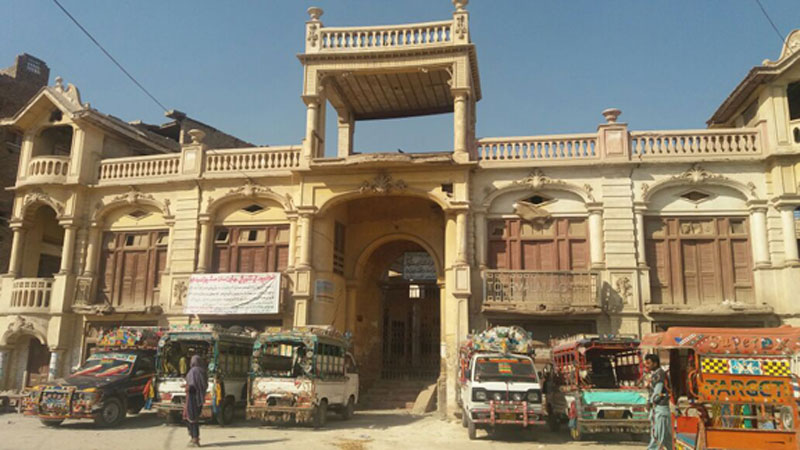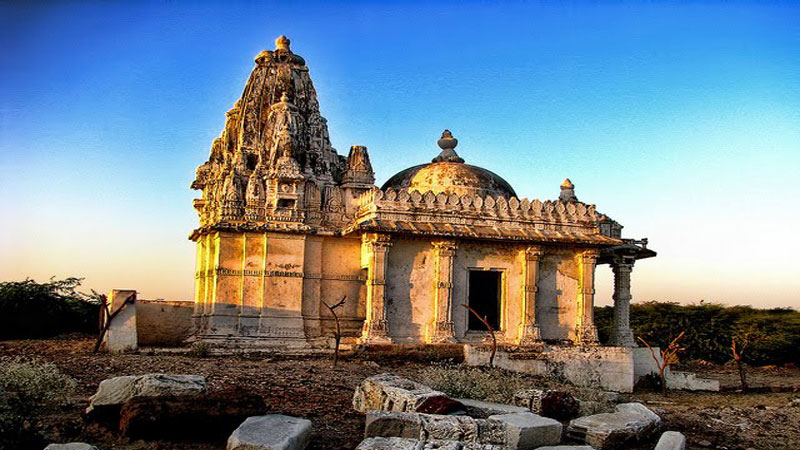 SHIKARPUR: Founded by the Daudpotras in 1617 and later captured by the Kalhoras in 1701, Shikarpur, once a land of magnificent buildings and perfume industry, was called ‘Paris of the East’.
SHIKARPUR: Founded by the Daudpotras in 1617 and later captured by the Kalhoras in 1701, Shikarpur, once a land of magnificent buildings and perfume industry, was called ‘Paris of the East’.
According to historians, the city with its aesthetic beauty, was a commercial centre that provided routes for transportation of Indian goods to western India and central Asia, and its core of manufactures included brass and metal goods, carpets, cotton cloth, and embroidery.
Shikarpur was a city closed within a fort that had eight gates including Hathi Gate, Lakhi Gate, Hazari gate, Khanpur Gate, Suvi Gate, Wagana Gate, Karan Gate and Noshero Gate.
The city carrying a history of culture, heritage, hospitality and civilisation, had earned fame in the subcontinent for an excellent administrative set-up, academic institutions, well-endowed hospitals treating patients from far-flung areas, an underground drainage system, brick-paved roads, the fortification wall, delicious ‘achhar’, and extensive woodwork in houses having intricately carved timber.
Geographically, the district of Shikarpur borders Balochistan on the west and is connected to southern Punjab through Kashmore in the north while the Bolan Pass was a trade route of caravans for passing through into Afghanistan that allowed merchants to trade with central Asian and African lands.
The rich merchants in return used to spent money on the beautification of the city and to facilitate them, a branch of the Central Bank of India was constructed in Shikarpur in 1940 in collaboration with Shikarpuri Hindu traders.
Located in the center of the old city, Dhak Bazaar or covered market is a long, narrow street with shops on both sides. It is covered with woodwork of pure teak projecting an example of architectural marvel. It has been serving as a cool shade during the hot summers. Shikarpur along with other contemporary cities like Bukhara, Samarkand, and Istanbul at that time had a covered street market.
Besides, Hopeful Academy, which has now turned into Government Boys’ High School, was affiliated with Bombay University.
During British rule, the first primary school was established by British officers in Shikarpur, and out of the total 77 graduates, 70 belonged to Shikarpur district during 1930s.
A prominent writer, Nasim Bukhari said that Shikarpur was the first city in Pakistan where a power plant was established by a Hindu trader to supply electricity about 100 years ago.
A Hindu philanthropist, Rai Bahadur Udhodas Tarachand established RBUT Hospital, now called as District Headquarters Hospital of Shikarpur.
Moreover, Sir Henry Holland Eye Hospital was established within a few years by Sir Henry Tristram Holland in 1910 in collaboration with a Hindu philanthropist of Shikarpur, and later it became one of the largest eye hospitals in the country. The hospital could facilitate about 600 patients at a time, but now it is closed.
The Tour Mal Mul Chand Chhabria Bhudha Ashram Building, later owned by Eveque Trust Property Board, provided accommodation and food to elderly person, and still exists in Shikarpur, but in a dilapidated condition.
Sadly, according to the notification issued by the cultural department of the Government of Sindh, 1,203 ancient buildings were declared as ‘protected heritage’ while 250 of them were demolished and the remaining are in dilapidated condition.
 Furthermore, Shikarpur had built separate swimming pools for women and men at Sindh Waah (irrigation water canal), to counter scorching heat of summer.
Furthermore, Shikarpur had built separate swimming pools for women and men at Sindh Waah (irrigation water canal), to counter scorching heat of summer.
Regarding entertainment, three cinemas were built including Afshan Cinema, Plaza Cinema and Naz Cinema, however two of them were demolished as people shifted to internet, CDs and cable networks. Naz cinema was declared national heritage in a dilapidated condition.
Shikarpur’s Kulfi Faluda, Acchar and Deewan’s sweets are famous for their tantalizing aroma and unique taste.
Shikarpur is the home of great dynasties of the Soomros, Shaikhs, Bhayos, Mahars, Pathans and Jatois and the prominent personalities include the Sindh chief minister before partition Shaheed Allah Bux Soomro, the first governor of Sindh Sir Ghulam Hussain Hidayatullah, Barrister Ahmed Mian Soomro, the former governor of Sindh and chairman of the Senate of Pakistan Mohammad Mian Soomro, Ghuos Bux Khan Mahar, Imtiaz Shaikh, Dr Muhammad Ibrahim Jatoi, Iftikhar Soomro, Aftab Shahban Mirani, Agha Siraj Khan Durrani, Maulana Deen Mohammad Wafai, advocate AR Khan Brohi, Bedal Masroor and others.
The city with eight gates has transformed into a misery-struck rustic place that undoubtedly has lost its past glory due to mismanagement, maladministration, poorer attention of government, rampant crime and tribal clashes.
Replaced by madressas, the collapse of modern education system worsened the situation during 1980s, and today there are about 200 madressas imparting religious education and only in Arabic language, whereas there are only 150 formal schools, four colleges and one university campus in Shikarpur city.
Published in Daily Times, July 16th 2018.